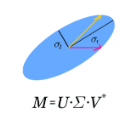Dynamic Mode Decomposition (DMD) is a model-order reduction approach, whereby spatial modes of fixed temporal frequencies are extracted from numerical or experimental data sets. The DMD low-rank or reduced operator is typically obtained by singular value decomposition of the temporal data sets. For parameter-dependent models, as found in many multi-query applications such as uncertainty quantification or design optimization, the only parametric DMD technique developed was a stacked approach, with data sets at multiples parameter values were aggregated together, increasing the computational work needed to devise low-rank dynamical reduced-order models. In this paper, we present two novel approach to carry out parametric DMD: one based on the interpolation of the reduced-order DMD eigenpair and the other based on the interpolation of the reduced DMD (Koopman) operator. Numerical results are presented for diffusion-dominated nonlinear dynamical problems, including a multiphysics radiative transfer example. All three parametric DMD approaches are compared.
翻译:动态模式分解(DMD)是一种减少空间模式的方法,即从数字或实验数据集中提取固定时间频率的空间模式。DMD低级或低级操作员通常是通过时间数据集的单值分解获得的。对于依赖参数的模型,如不确定性量化或设计优化等许多多质应用中发现的那样,唯一开发的参数DMD技术是一种堆叠式方法,以多个参数值集合数据集,增加了设计低级动态减序模型所需的计算工作。在本文中,我们提出了两种执行参数DMD的新型方法:一种是基于对减少的DMD egenpair的内推法,另一种是基于缩小的DMD(Koopman)操作员的内推法。数字结果是用于扩散为主的非线性动态问题,包括一个多物理辐射转移示例。所有三种参数DMD方法都进行了比较。



